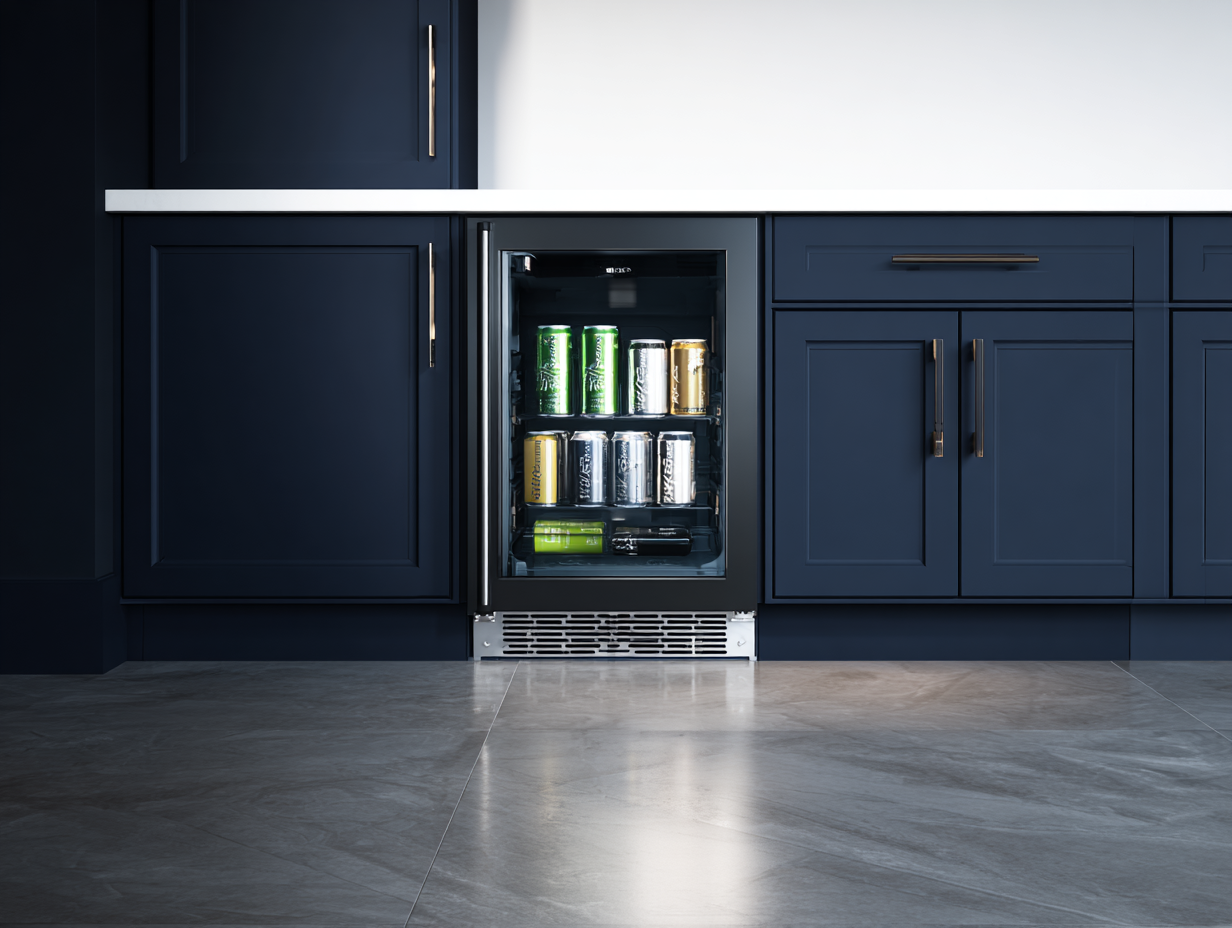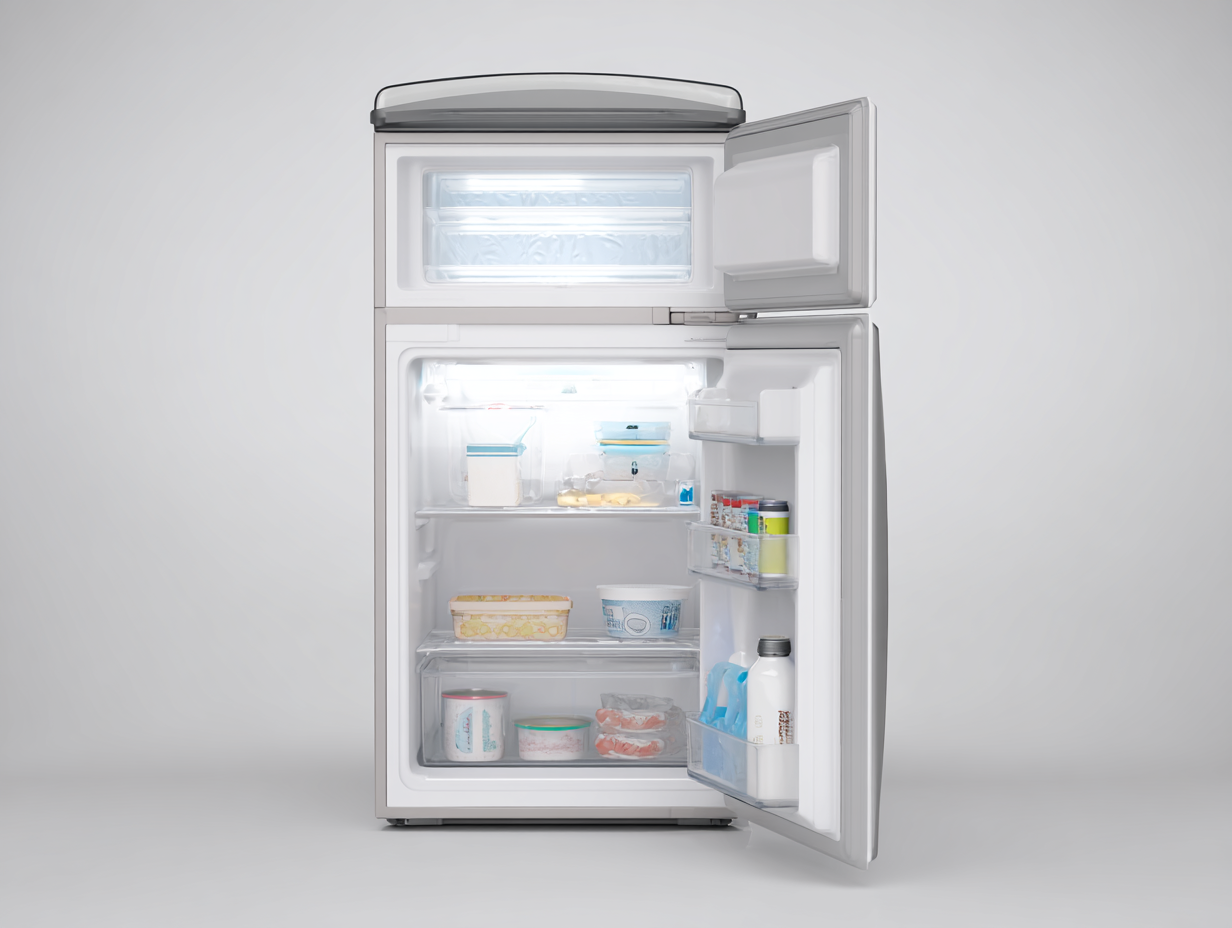How Do You Choose the Right Mini Fridge? A Complete Buyer's Guide
Thinking about buying a mini fridge? This guide answers all your questions, from choosing the right size and type to understanding energy efficiency, climate class, and noise levels.

The Savior of Small Spaces: A Guide to Choosing a Mini Fridge
We don't need to limit ourselves to conventional appliance types to meet our needs. There are many alternative models of home appliances that make life easier, and the mini fridge is one of them.
Also known as a hotel-style minibar, the small-sized refrigerator can be used on home terraces, in small kitchens, offices, and even dorm rooms. It's not just a small beverage cooler; some types include all the features of a full-sized refrigerator. A mini fridge with a vegetable crisper, shelves, drawers, and a freezer compartment can be a lifesaver in places where large appliances don't fit or aren't sufficient.
So, what should you consider when buying a mini fridge? Let's take a closer look at the features of this superhero, also known as a compact fridge or mini-fridge, and discover exactly which model you need.
1. Which Type of Mini Fridge Fits Your Space?

Although this refrigerator is "mini," different sizes are designed to ensure suitability for your space. For practical use, first decide where you will place the small refrigerator. This way, you can buy a minibar that makes you say, "It's like it was made for this spot!" There are basically two types of mini fridges:
-
Freestanding / Counter-Height Mini Fridge: The freestanding mini fridge, as its name suggests, is designed to be used independently. If you plan to use the mini fridge in different areas like the kitchen or terrace, a freestanding model is perfect for you. However, it's worth noting that its height is greater than that of a built-in mini fridge. Also, don't forget to check if you can open the mini fridge door comfortably in the locations you are considering.
-
Built-in / Under-Counter Fridge: The under-counter refrigerator is smaller than the freestanding model. It is generally used by being placed inside built-in kitchen or living room furniture. You can choose an under-counter mini fridge that offers different color options to match your home decor. This way, you can save space without sacrificing aesthetics. For long-term use, carefully measure the dimensions of the under-counter space. There should be about 1.5 cm of clearance on both sides and at the back of the mini fridge for adequate ventilation.
2. What Features Should You Look For?

The device earns its name as the "smallest refrigerator" thanks to its compartments. Just like a normal refrigerator, these models also include a freezer, drawers, shelves, and door compartments. If you're buying a mini fridge just to have cold drinks in your bedroom or living room, you can opt for models with shelves but no drawers. If you want to enjoy ice cream on your veranda, you can get a model with a freezer compartment, or one with drawers to keep food fresh in an office or dorm room.
3. How to Choose an Energy-Efficient Model?
A mini fridge consumes less energy than a large refrigerator due to its small capacity. Still, considering it's an appliance that runs day and night, you can protect your budget by choosing a model with a high energy class.
"A" represents the class with the highest energy efficiency, while "G" represents the class that consumes the most energy. The lowest energy class that can be sold for appliances is F. By choosing an A-class mini fridge, you can make an economical choice and contribute valuably to the future of the environment.
In addition to energy, mini fridges also have a label indicating the climate class. Although the climate class is not directly related to energy consumption, it is important to pay attention to it to prevent the device from failing prematurely. The climate class indicates the temperature conditions under which cooling systems like refrigerators can be used. The climate classes and their meanings are as follows:
-
SN Climate Class: Appliances in this class can be used in temperatures between +10 and +32 degrees Celsius. If you plan to use the minibar in places like a garage or basement where temperatures can drop below ten degrees, this climate class may not be sufficient.
-
N Climate Class: This class includes devices that can be used between +16 and +32 degrees Celsius. If you have a non-air-conditioned home that reaches very high temperatures, we recommend the next climate class.
-
ST Climate Class: Coolers that can be used between +16 and +38 degrees Celsius fall into this class. It is preferable as it suits the summer conditions of most geographical regions.
-
T Climate Class: Can be used in all spaces with temperatures between +16 and +43 degrees Celsius. It is widely preferred as it offers a broad temperature range.
4. What About the Noise Level?
You wouldn't want to be disturbed by a constant noise when you're about to sleep at home or trying to concentrate at your office, right? We hear you say "Yes." Then, we recommend that you pay attention to the low noise level of the mini fridge you won't be unplugging 24/7. The noise level is expressed in decibels (dB), and as the decibels increase, so does the noise level. You can think of decibel measurements like this:
-
10 dB: sound of breathing
-
20 dB: sound of rustling leaves
-
50 dB: a low-volume conversation tone
-
60 dB: sound of an electric toothbrush
-
70 dB: sound of a vacuum cleaner
-
80-90 dB: noise level of heavy traffic
You can achieve seamless use by choosing a mini fridge with a noise level between 35 dB and 45 dB.
5. Are There Any Extra Functions to Consider?
You've decided on the type, climate class, and noise level of your mini fridge. Now, it's time to learn about the small but important details in finding the best mini fridge. Depending on the model and brand, mini fridge models can offer some extra features:
-
Mini fridges with a reversible door feature allow you to use the device in any desired position.
-
Some minibar models do not have a light in the cooling sections. A mini fridge with an LED light helps you easily see inside even in the dark.
-
A mini fridge that signals when the door is left open helps you take precautions before the food spoils.
-
A mini fridge needs to be used at different temperatures in summer and winter. However, it's not easy to make this temperature adjustment in places with sudden weather changes like in the spring. Choosing a device with automatic temperature control prevents the device from being affected by such weather changes.
Tags
Other Articles

3 Flawless Layouts and 5 Real-Life Studio Solutions
Wondering how to arrange furniture in your small apartment? Get 3 fail-proof layouts for narrow living rooms and 5 genius plans for studio apartments.

Studio Apartment Hack: 10 "Cloffice" & WFH Nook Ideas That Save Space
Need a home office in your studio apartment? Discover 10 clever ways to create a WFH nook, including amazing "cloffice" (closet office) hacks.

Best Space-Saving Gifts for Small Apartments?
Wondering what gifts to buy for someone in a small space? Our 2025 guide answers with 30 genius space-saving tech, storage, and furniture ideas.